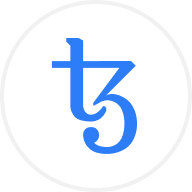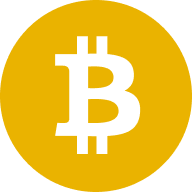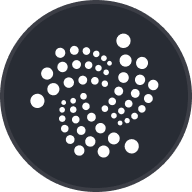BitTorrent (BTT) é uma moeda digital que rapidamente ganhou popularidade no mercado de criptomoedas. Originou-se da rede BitTorrent amplamente usada, conhecida pelo compartilhamento de arquivos ponto a ponto.
O que é BTT?
BTT é uma criptomoeda introduzida pela BitTorrent em 2019. Funciona como um método de pagamento dentro da rede BitTorrent, permitindo aos usuários adquirir velocidades de download mais rápidas com BTT. Também serve como um meio de recompensar os indivíduos que contribuem com sua capacidade de armazenamento para a rede BitTorrent.
Como um token TRC-10, o BTT opera na blockchain Tron. Tron é uma plataforma blockchain projetada para fornecer escalabilidade, descentralização e recursos de alto desempenho.
Equipe da BitTorrent
Bram Cohen e Ashwin Navin fundaram o protocolo BitTorrent e fundaram a BitTorrent, Inc. em 2004. Após a aquisição da BitTorrent pela Tron, Justin Sun, fundador da Tron, atuou como CEO da BitTorrent. Como um jovem empreendedor, Sun rapidamente se tornou o centro das atenções como uma das personalidades mais talentosas da indústria de blockchain. A equipe de 53 homens atualmente envolvida nos aspectos técnicos do projeto, operações e atualizações consiste em engenheiros e cientistas que trabalham principalmente nos Estados Unidos.
Como funciona o BitTorrent?
O BitTorrent opera utilizando uma rede descentralizada de nós para armazenar e indexar dados. Os dados podem incluir uma ampla gama de informações, incluindo postagens de blog, atualizações de mídia social e transações financeiras. A rede BitTorrent utiliza um mecanismo de consenso Proof of Stake (PoW) para garantir a segurança. Isso significa que os nós recebem recompensas por proteger a rede colocando em stake os tokens BTT.
Os usuários podem usar tokens BTT para agilizar seus downloads ao baixar arquivos da rede BitTorrent. A velocidade dos downloads é diretamente proporcional ao número de tokens BTT que um usuário aposta.
Token de utilidade do BitTorrent: BTT
BTT é o token de utilidade para a rede BitTorrent, operando na blockchain Tron como um token TRC-10. Funciona principalmente como um método de pagamento para facilitar downloads mais rápidos na rede BitTorrent.
Tokenomics BTT
A oferta total de tokens BTT é de 990 bilhões. Do total, 6% foram vendidos durante a oferta inicial de moedas (ICO), 2% foram alocados para a equipe BitTorrent e 9% foram distribuídos entre os investidores iniciais. Com o tempo, os 83% restantes dos tokens BTT serão distribuídos por meio de vários métodos, como staking, airdrops e recompensas pela utilização da rede BitTorrent.
Como colocar em stake BTT
A OKX fornece uma variedade de planos de staking para BTT. Para o stake de BTT na OKX, comece criando uma conta OKX. Uma vez logado, navegue até OKX Earn. Pesquise "BTT" na barra de pesquisa e selecione seu plano de stake preferido. Em seguida, clique em Assinar. A duração do bloqueio dos seus tokens BTT depende do plano de apostas que você escolher. Durante este período, você receberá tokens BTT adicionais como recompensa.
Casos de uso do BTT
BTT tem vários casos de uso, como:
- O BTT pode ser usado para adquirir velocidades de download mais rápidas na rede BitTorrent.
- Os usuários podem obter renda passiva na forma de tokens BTT, oferecendo espaço de armazenamento para a rede BitTorrent.
- O BTT pode alimentar aplicativos descentralizados (dApps) na rede BitTorrent. Isso inclui armazenamento descentralizado de arquivos, jogos e finanças descentralizadas (DeFi).
- O BTT pode ser apostado para ganhar tokens BTT adicionais como recompensa. Staking envolve o ato de bloquear seus tokens BTT em uma plataforma de staking disponível, como OKX Earn, para receber recompensas de token.
Distribuição do token BTT
A distribuição do token BTT é a seguinte:
- 6% foram vendidos durante a oferta inicial de moedas (ICO) em janeiro de 2019.
- A equipe do BitTorrent recebeu 2% de participação.
- Os investidores iniciais receberam 9%.
- Os 83% restantes serão distribuídos gradualmente em várias formas, como recompensas de apostas, airdrops e incentivos para a utilização da rede BitTorrent.
O futuro plano de expansão do BitTorrent
A equipe BitTorrent planeja aprimorar a rede BitTorrent introduzindo novos recursos e simplificando a participação do usuário. Isso envolve aumentar a compatibilidade com formatos de arquivo adicionais, melhorar a funcionalidade de pesquisa de arquivos e simplificar os recursos de compartilhamento de arquivos.
A equipe do BitTorrent visa aprimorar a utilização do BTT, expandindo sua aceitação como método de pagamento. Uma forma de conseguir isso é por meio da formação de parcerias com estabelecimentos comerciais e simplificação do processo de compra do BTT pelos usuários.
A equipe por trás do BitTorrent também planeja expandir para novos mercados. Isso inclui regiões como Ásia, África e América Latina.















Redes sociais